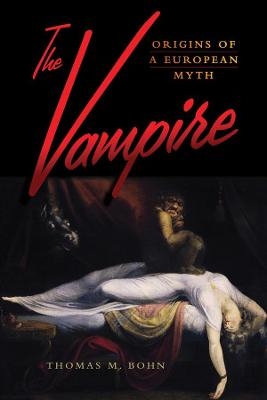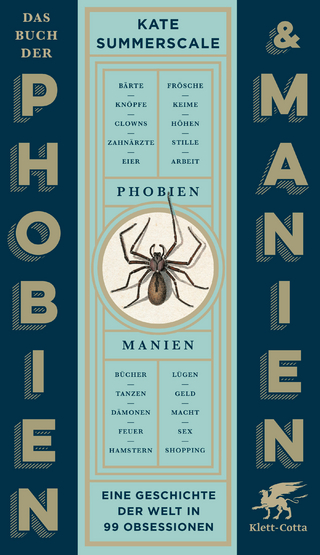The Vampire
Origins of a European Myth
Seiten
2019
Berghahn Books (Verlag)
978-1-78920-292-2 (ISBN)
Berghahn Books (Verlag)
978-1-78920-292-2 (ISBN)
Drawing on a wealth of heretofore neglected sources from multiple languages, this book gives a fascinating account of how vampires-whose various incarnations originally developed within the folk traditions of societies throughout the world-came to be inextricably tied to Eastern Europe in the popular imagination.
Even before Bram Stoker immortalized Transylvania as the homeland of his fictional Count Dracula, the figure of the vampire was inextricably tied to Eastern Europe in the popular imagination.
Drawing on a wealth of previously neglected sources, this book offers a fascinating account of how vampires—whose various incarnations originally emerged from folk traditions from all over the world—became so strongly identified with Eastern Europe. It demonstrates that the modern conception of the vampire was born in the crucible of the Enlightenment, embodying a mysterious, Eastern otherness that stood opposed to Western rationality.
From the Prologue:
From Original Sin to Eternal Life
For a broad contemporary public, the vampire has become a star, a media sensation from Hollywood. Bestselling authors such as Bram Stoker, Anne Rice and Stephenie Meyer continue to fire the imaginations of young and old alike, and bloodsuckers have achieved immortality through films like Dracula, Interview with a Vampireand Twilight. It is no wonder that, in the teenage bedrooms of our globalized world, vampires even steal the show from Harry Potter. They have long since been assigned individual personalities and treated with sympathy. They may possess superhuman powers, but they are also burdened by their immortality and have to learn to come to terms with their craving for blood. Whereas the Southeast European vampire, discovered in the 1730s, underwent an Americanization and domestication in the media landscape of the twentieth century, the creole zombies that first became known through the cheap novels and horror films of the 1920s still continue to serve as brainless horror figures. Do bloodsuckers really exist and should we really be afraid of the dead? These are the questions that I seek to tackle, following the wishes of my daughter, who was ten when I started this project.
Even before Bram Stoker immortalized Transylvania as the homeland of his fictional Count Dracula, the figure of the vampire was inextricably tied to Eastern Europe in the popular imagination.
Drawing on a wealth of previously neglected sources, this book offers a fascinating account of how vampires—whose various incarnations originally emerged from folk traditions from all over the world—became so strongly identified with Eastern Europe. It demonstrates that the modern conception of the vampire was born in the crucible of the Enlightenment, embodying a mysterious, Eastern otherness that stood opposed to Western rationality.
From the Prologue:
From Original Sin to Eternal Life
For a broad contemporary public, the vampire has become a star, a media sensation from Hollywood. Bestselling authors such as Bram Stoker, Anne Rice and Stephenie Meyer continue to fire the imaginations of young and old alike, and bloodsuckers have achieved immortality through films like Dracula, Interview with a Vampireand Twilight. It is no wonder that, in the teenage bedrooms of our globalized world, vampires even steal the show from Harry Potter. They have long since been assigned individual personalities and treated with sympathy. They may possess superhuman powers, but they are also burdened by their immortality and have to learn to come to terms with their craving for blood. Whereas the Southeast European vampire, discovered in the 1730s, underwent an Americanization and domestication in the media landscape of the twentieth century, the creole zombies that first became known through the cheap novels and horror films of the 1920s still continue to serve as brainless horror figures. Do bloodsuckers really exist and should we really be afraid of the dead? These are the questions that I seek to tackle, following the wishes of my daughter, who was ten when I started this project.
Thomas M. Bohn is Professor of Russian and Soviet History at Justus Liebig University Giessen.
List of Illustrations
Prologue: From Original Sin to Eternal Life
Introduction: The Vampire as an Imperial Category
Chapter 1. Vampirism in the West
Chapter 2. Vampirism in the East
Chapter 3. Vampirism in the Headlines
Chapter 4. Vampirism in Popular Belief
Chapter 5. Vampirism in the Modern Period
Conclusion: The Vampire as Local Scapegoat
Bibliography
Index
| Erscheinungsdatum | 29.09.2019 |
|---|---|
| Verlagsort | Oxford |
| Sprache | englisch |
| Maße | 152 x 229 mm |
| Themenwelt | Sachbuch/Ratgeber |
| Geschichte ► Teilgebiete der Geschichte ► Kulturgeschichte | |
| Sozialwissenschaften ► Ethnologie ► Volkskunde | |
| Sozialwissenschaften ► Soziologie | |
| ISBN-10 | 1-78920-292-2 / 1789202922 |
| ISBN-13 | 978-1-78920-292-2 / 9781789202922 |
| Zustand | Neuware |
| Haben Sie eine Frage zum Produkt? |
Mehr entdecken
aus dem Bereich
aus dem Bereich
der stille Abschied vom bäuerlichen Leben in Deutschland
Buch | Hardcover (2023)
C.H.Beck (Verlag)
23,00 €
vom Mittelalter bis zur Gegenwart
Buch | Softcover (2024)
C.H.Beck (Verlag)
12,00 €
eine Geschichte der Welt in 99 Obsessionen
Buch | Hardcover (2023)
Klett-Cotta (Verlag)
22,00 €




